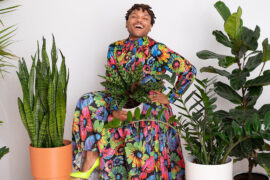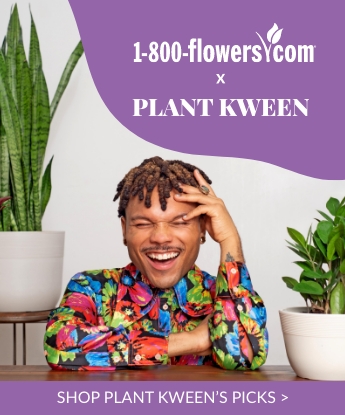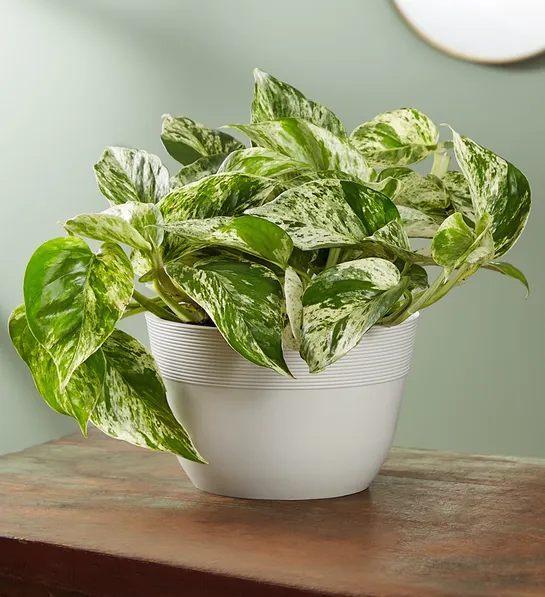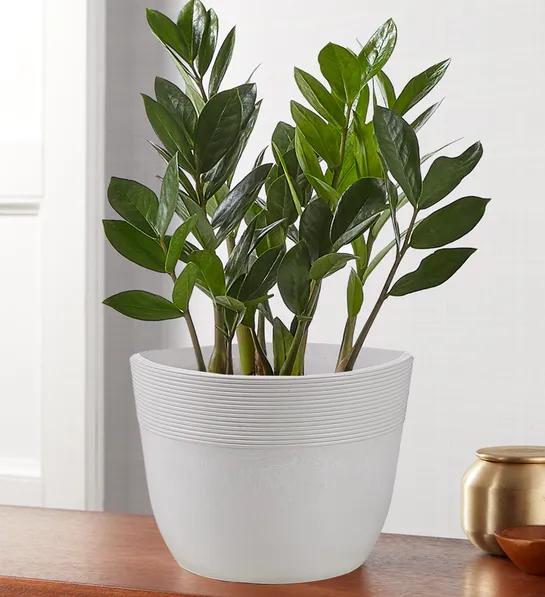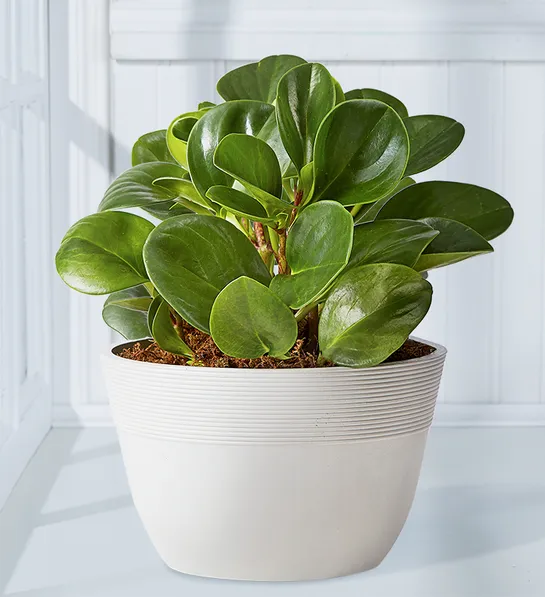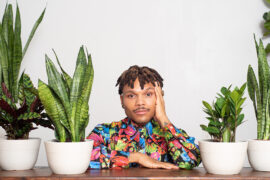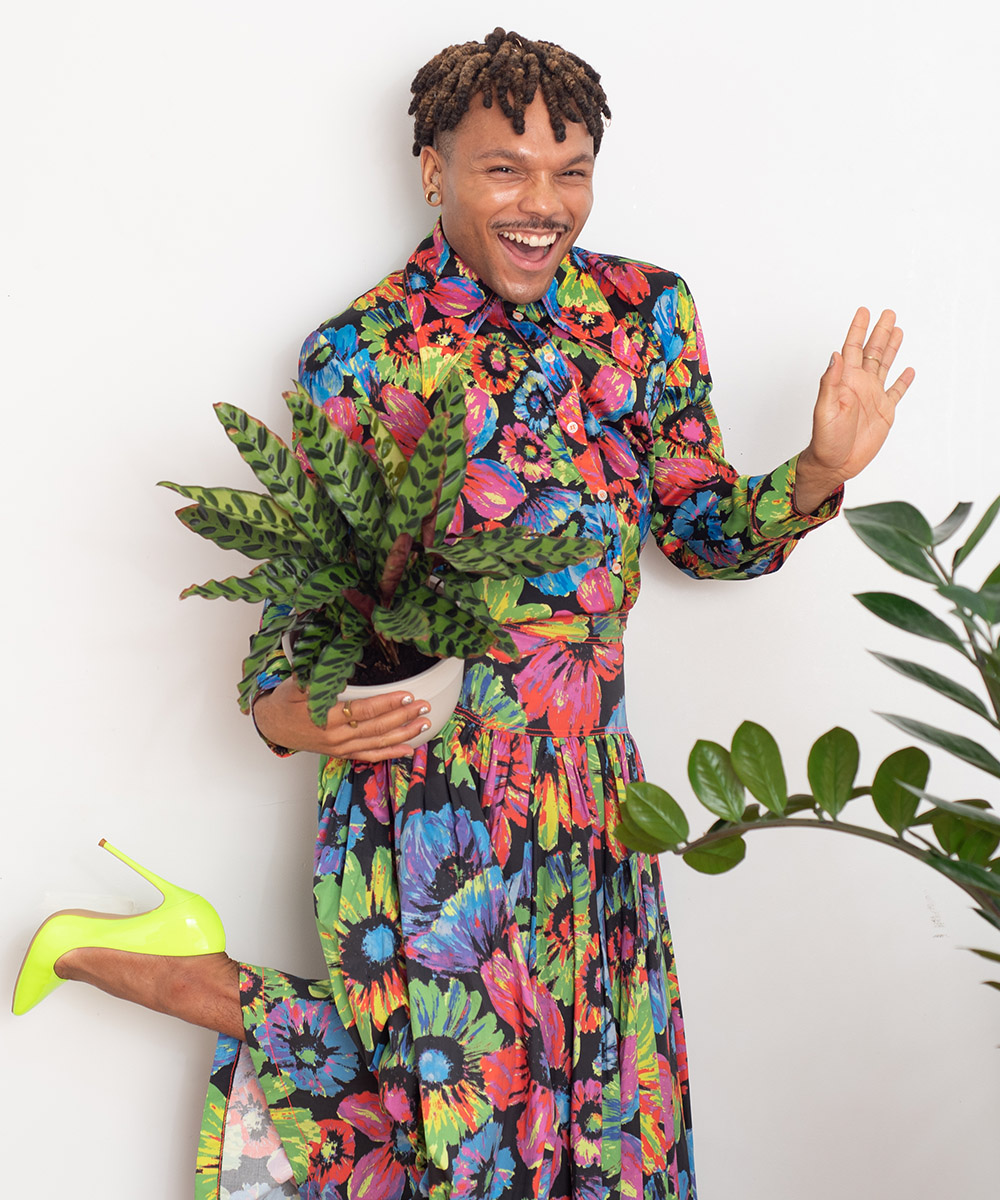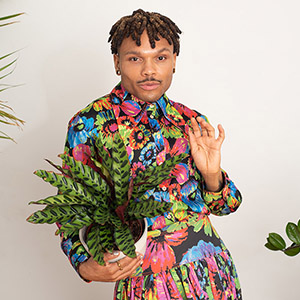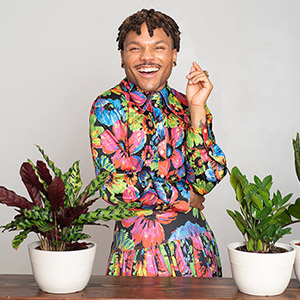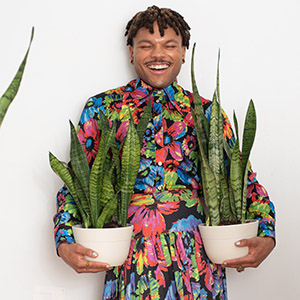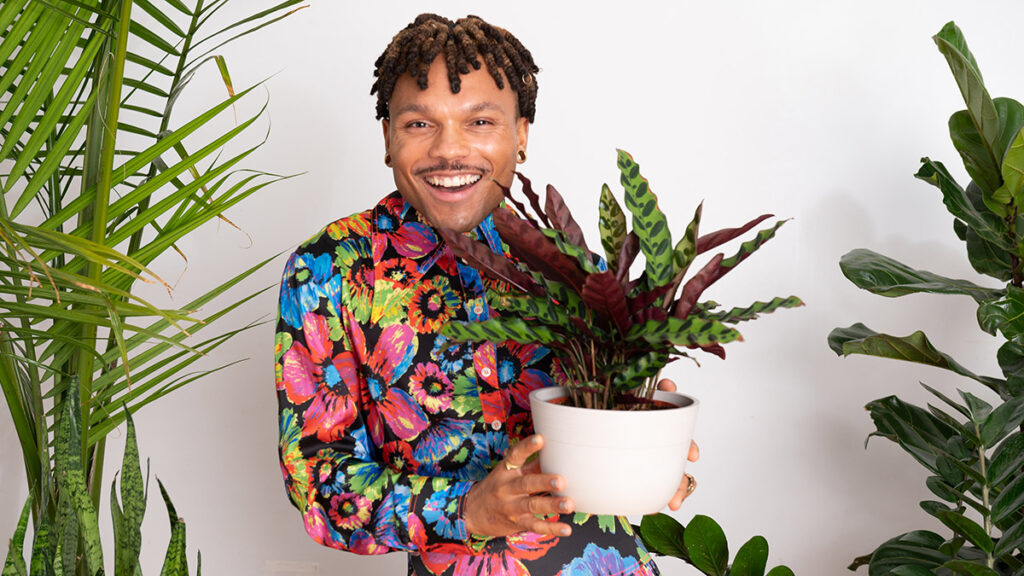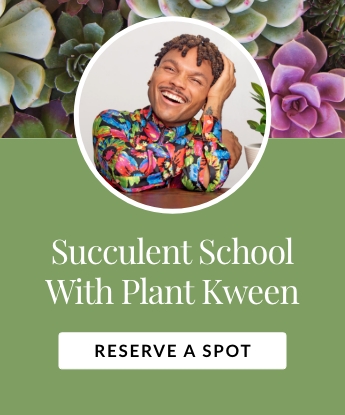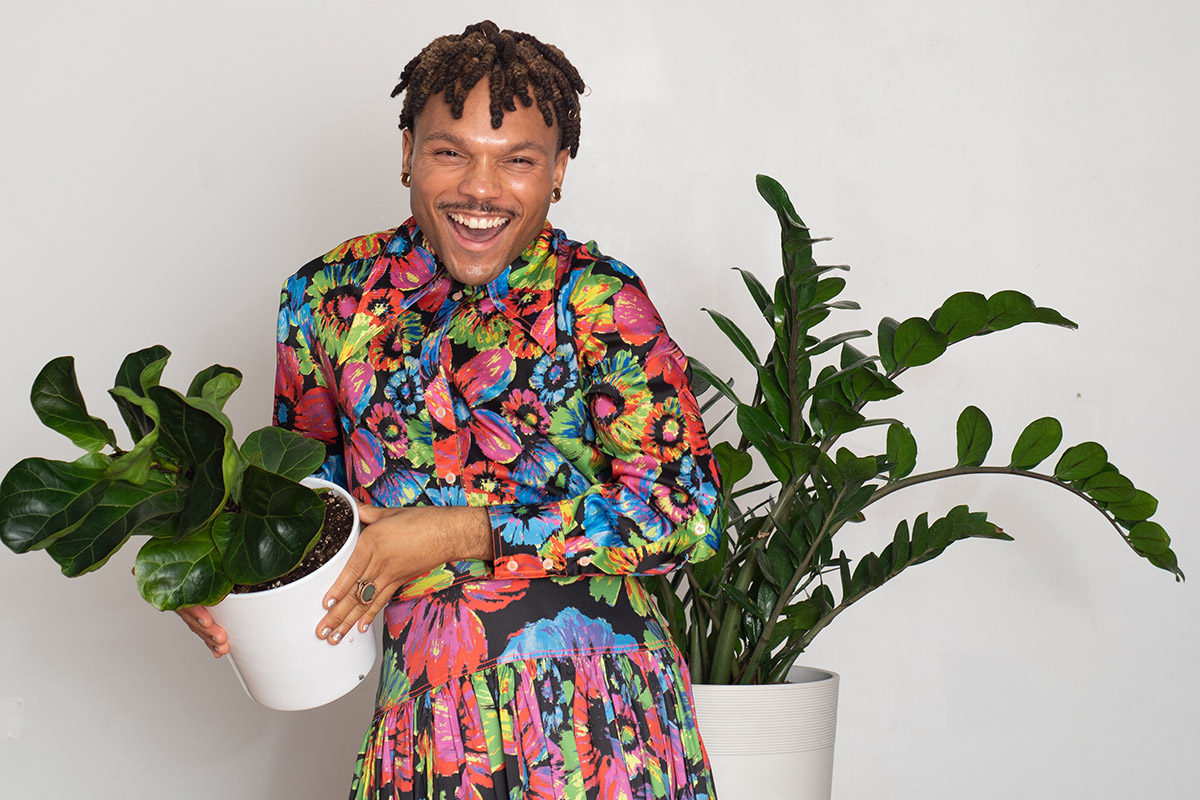
Interior decorating: Fun for some, overwhelming for others. Once you have the basics down — Color palette? Check. Layered textures? Check. Patterns and prints? Check. A mix of high/low, and vintage/modern furniture pieces? Check. — then it’s time to invite your friends over and get the party started. Right? Not just yet. The missing element that can truly create a living space is actually, well, living. And we’re not talking about pets.
There’s an art, and plenty of science, to decorating with plants. It’s not just about filling a corner with a palm in a pot. We asked an expert, Brooklyn-based “plantfluencer” Christopher Griffin (they/them) — also known as Plant Kween, lover of plants, fashion, and wellness — to guide us through the process and share some very loose rules for how to enliven your space with these living, breathing, beautiful creatures.
Why decorate with plants?
“It’s important to see the process of bringing plants into a home as more than simply decorating,” Griffin says. “Yes, they’re good for our mental health,” they point out, but “plants also provide us the opportunity to reconnect with nature and ourselves, especially in urban environments, and especially if you don’t have access to green areas where you live.” Plus, research has shown that plants are natural air purifiers, so they literally can help clean the air around us.

‘Decorating’ is a limiting word. This is a bigger process than that. You’re bringing nature into your home. Be curious and willing to learn.
Christopher griffin, aka plant kween
Griffin’s first plant was a marble queen pothos, which they purchased from their local hardware store when they felt their new apartment was missing something. Some 230 specimens later, they have built a 400K following on Instagram based on the idea that plants really do bring life into your home — even if you live alone.
And just as we can express ourselves through decorating, we can also use plants to showcase our style and personalities. “Our gardens can be extensions of our ‘inner gardens,'” Griffin says. “They can be a pathway to self-care.”
How to choose the right plant, room by room
First, understand that you can’t just ask what the plants can do for your space but instead what your space can do for your plants. “Think of the plant first,” Griffin says. That means considering humidity level, temperature, the type of light a room gets (natural or artificial), among other factors. “Then research each plant and match their natural habitat to your environment as much as possible.”
For example, a ZZ plant is light flexible, so it can be placed in many different locations in your space. Orchids are epiphytic, meaning they grow not in the ground but on other plants, and, therefore, can be mounted or even planted outside on the branches of trees. An aloe vera plant is pretty hardy and resilient, so if you’ve got a bad track record with plants, this one might be for you. “You want the plant to stay alive instead of going to that little botanical garden in the sky,” Griffin says.
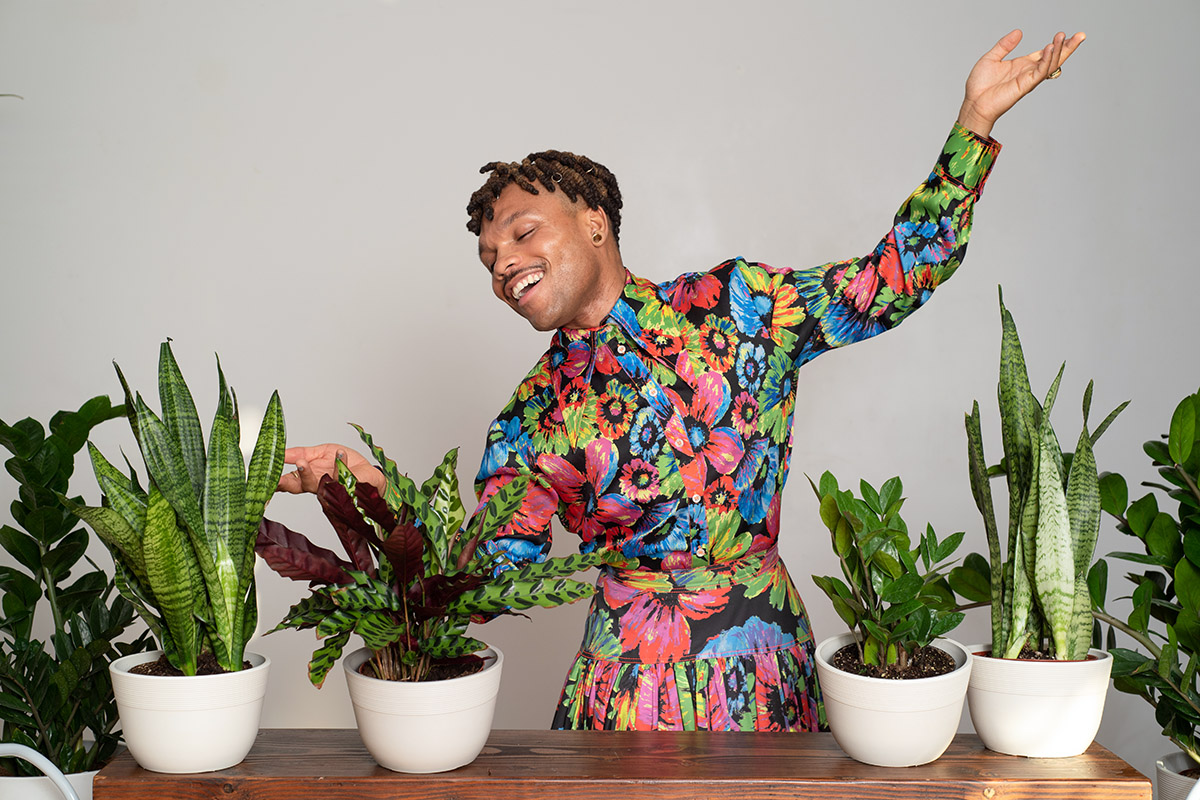
They also suggest looking at the function of a room. For example, a bathroom, where hot showers happen daily, tends to have lots of humidity. Which plants thrive in this environment? Air plants, bromeliads, and ferns. “I like to make a little jungle in there,” they say. Or try a mini kitchen garden of herbs that you can pluck from when you’re cooking. In a bedroom, “think of some of NASA’s top-ranking, air-purifying plants so you can breathe in the most delicious oxygen during the night, like snake plants.” In other words, “play matchmaker” with plants and the form and function of a space.
Plants in (unexpected) situ
When it comes to placing plants around your home, don’t be afraid to stray from the norm. Griffin has a utility cart to wheel their plants in front of a sunny window. A bar cart is another idea. “In big cities, where space is a commodity, you may want to go vertical.” To that end, Griffin installed shelves in their Brooklyn apartment, so a lot of plants are on the walls. “They’re my living, breathing pieces of artwork shining all their lushness,” they say. “Bromeliads, air plants, staghorn ferns…you can literally hang them from a wall.”
They also suggest hanging plants from the ceiling or growing a vine along a wall, such as a pothos, spider plant, or philodendron, or letting ivy grow inside from outdoors.
Once you’ve placed your plants, then adjust. “Take some time to see how the plant likes its new space and then decide if you need to make any changes, like getting a humidifier or a grow light, or changing the placement.”
Texture is an element of interior plant design
Another factor to consider is what you want the feel of a space to be. If you’re going for softness, then blooming plants ought to be high on your list. A more spare, arid vibe should lead you to desert euphorbia, cacti, and succulents, Griffin says.
Griffin also suggests playing with plants of varying textures to create a totally original setup. Rules, after all, are meant to be broken. “It’s fun to mix and match plants that don’t usually grow together,” they say. “I kind of mix them all together to create an eclectic bunch of my ‘green gurls.'”
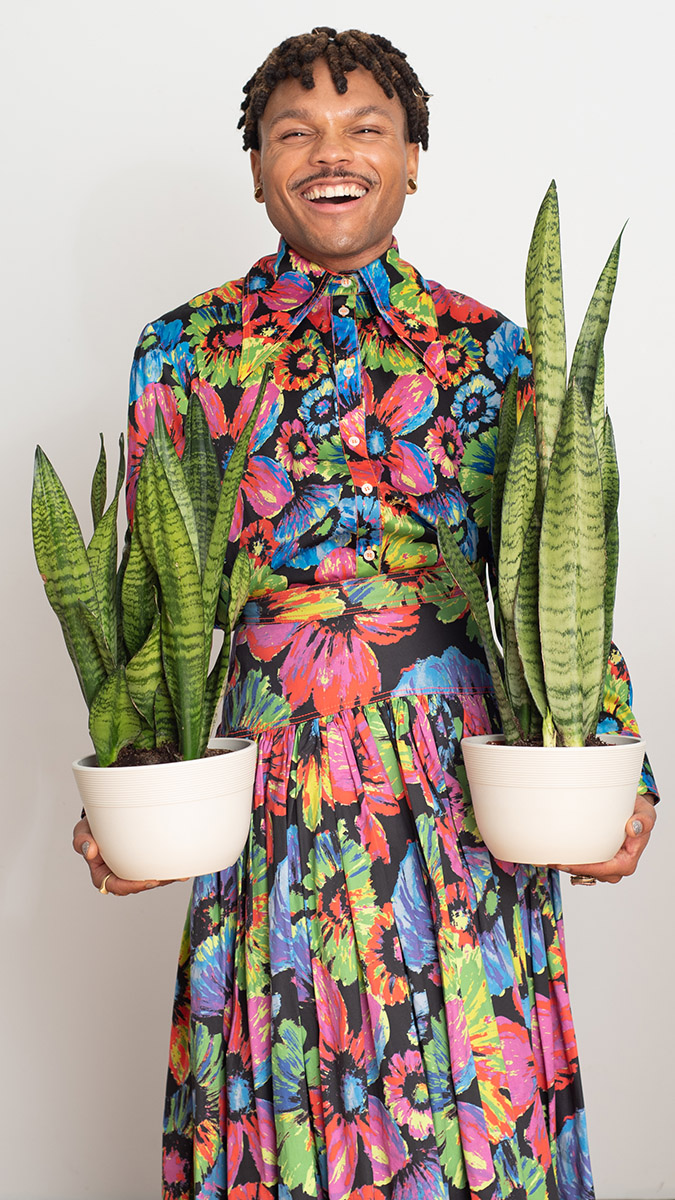
Consider plants of varying heights
Part optical illusion, part practicality, height does matter when decorating with plants. “I’m really short, so a lot of plants seem really tall to me,” jokes Griffin, who says the tallest plant they have is about 5 feet 8 inches tall.
Taller plants make a space feel smaller, and smaller plants have the opposite effect. “To make my space feel bigger, I go with shorter plants. If I had a larger space with higher ceilings, I would have higher plants,” Griffin says.
If you’re in the latter camp, a baby rubber plant might be a good choice. If the former, and you have high ceilings, a fiddle leaf fig — which can reach 10 feet in height — might be the perfect complement to your space.
Coordinating plants and decorating styles
Does the plant style need to match your décor? “Honestly, that’s the beauty of plants: You can dress them up and place them to fit any kind of home décor or ambience you are going for,” Griffin says. He cites the show “Golden Girls” (though he insists every plant on the set was fake), saying the monstera plant in their residence “fit the Florida vibe.” But that same species looks amazing in Griffin’s friend’s Brooklyn apartment that is decked out in a classic vintage maximalist style. “Plants are very flexible when it comes to the ambience and décor in our homes.” Griffin says.
Placement is another example of plants’ versatility. Try a money tree in front of a wall painted in a solid bold color for one look, or camouflaged with a leafy green jungle wallpaper behind it for a different feeling. “Just like the Pokémon character Ditto, plants can be whatever you want them to be,” Griffin says.
“’Decorating’ is a limiting word,” Griffin says. “This is a bigger process than that. You’re bringing nature into your home. Be curious and willing to learn.”
Plant Kween’s decorating picks
There’s a whole world of plants to choose from when it comes to decorating your home or apartment. Here are a few of Griffin’s favorites.
